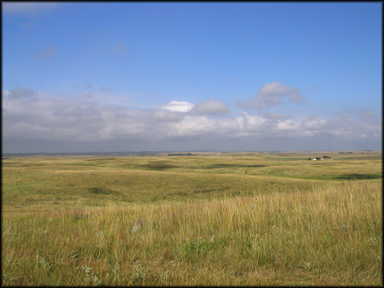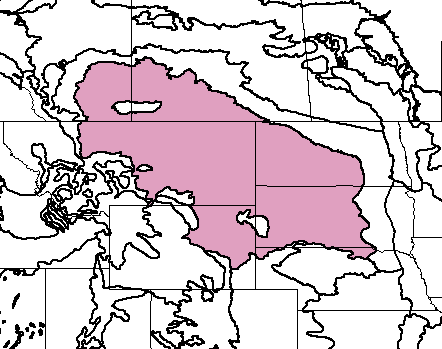
shortgrass prairie, Ordway preserve, North Dakota (c) 2005 Ron E. VanNimwegen
Bioimages home (click on an image to enlarge)
view
this page in its intended navigation context
Northern Short Grasslands
(WWF
ecoregion
NA0811)

shortgrass prairie, Ordway preserve, North
Dakota
(c) 2005 Ron E.
VanNimwegen

Source of bioregions data:
Olson, D. M. and
E. Dinerstein. The Global 200: Priority ecoregions for global conservation. (PDF
file) Annals of the Missouri Botanical Garden 89:125-126.
Distinctiveness (1=highest,4=lowest): 4
(nationally important)
The ecoregion contains a variety of grasses, shrubs, and in valleys, trees.*
Conservation Status (1=most endangered, 5=most
intact): 2 (endangered)
15% of the U.S. portion remains intact, with only about 2% intact in Canada.
Much of the area is degraded rather than converted, so it has potential for
recovery. *
 Poa annua
(spear grass)
Poa annua
(spear grass) | Artemisia tridentata | (big sagebrush) |
 Opuntia
spp. (prickly pear)
Opuntia
spp. (prickly pear) Populus
spp. (cottonwood)
Populus
spp. (cottonwood) Acer
negundo
Acer
negundoAssociated habitats
prairie dog town, Theodore Roosevelt Ntl. Park, North Dakota

Prairie dogs fill an important ecological
role in this ecoregion through their burrowing. (c) 2004
Maurice J. Kaufmann
hires
shortgrass prairie, western Saskatewan

(c)
2005 Scott and
Ruth Bassett
hires
badlands, Badlands National Park, South Dakota


Natural erosion results in an extensive canyon system known as "badlands".
(c)
2005 James H.
Bassett hires
hires
* Ricketts, T.H., E. Dinerstein, D.M. Olson, C.J. Loucks, et al. (1999) Terrestrial Ecoregions of North America: A Conservation Assessment. World Wildlife Fund - United States and Canada. Island Press, Washington, D.C. pp. 287-290.
Except as noted, images copyright 2002-2004 Steve Baskauf - Terms of use